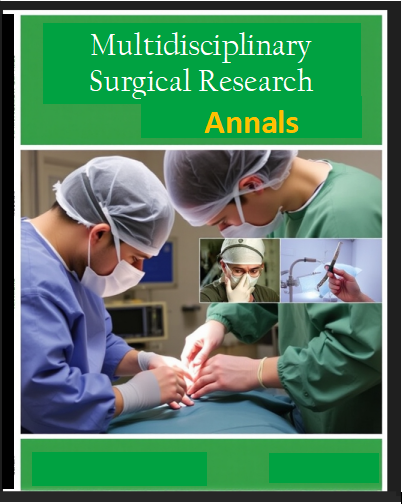COMPARATIVE ANALYSIS OF DIFFERENT ENVIRONMENTAL DISINFECTION TECHNIQUES IN OPERATING ROOM
Abstract
Background: Patient safety with hospital hygiene depends on effective infection control practices within the surgical environment. Different disinfection methods such as hydrogen peroxide vapor (HPV) and manual cleaning and UV-C disinfection are used to minimize microbial contamination. The effectiveness of these disinfection methods differs from one another and implementation depends on staff opinion. The research assesses multiple disinfection methods while investigating healthcare personnel's views about implementation practicability and reliability.
Methods: The research used quantitative methods to evaluate disinfection outcomes by performing cross-tabulation analysis as well as chi-square tests and non-parametric statistical methods. This evaluation included 43 cases that analyzed disinfection techniques regarding their impact on infection control procedures. The Mann-Whitney U test evaluated staff member perceptions to detect differences in their effectiveness assessments.
Results: The research demonstrated HPV disinfection to be the most successful technique since all participant ratings showed high effectiveness. The outcomes of manual cleaning fluctuated since effectiveness depended on how well staff executed the procedures. The disinfection outcomes from UV-C exposure fluctuated due to environmental elements including lighting conditions and length of exposure duration. Results from the chi-square analysis (χ² = 26.657, p = 0.000) proved that different disinfection techniques created a meaningful connection to their effectiveness levels. Staff members demonstrated different opinions about disinfection methods since their assessment of highly effective methods differed significantly from their evaluation of slightly effective methods (p = 0.035) and their assessment of moderately effective methods differed notably from their evaluation of slightly effective methods (p = 0.001).
Conclusion:The research demonstrated that HPV disinfection proved to be the most effective pathogen elimination strategy which matches previous findings from the literature. The performance of manual cleaning and UV-C disinfection needs evaluation to establish standard procedures. Staff perception about disinfection measures remains vital to decision-making while constant training programs and scientific evidence assessment should be implemented.
Recommendations:Prioritizing HPV disinfection of high-risk areas together with standardization of manual cleaning procedures and optimal use of UV-C systems should become a hospital priority. Staff training programs along with monitoring procedures must continue in order to link staff beliefs with their observed effective results. Research should focus on determining both short and long-term outcomes and cost efficiency to improve hospital disinfection techniques.




